This post may contain affiliate links. Please read our disclosure policy.
How to make oat flour in just minutes, with one ingredient and a food processor or blender. Gluten-free oat flour is perfect for adding to sweet and savory recipes!
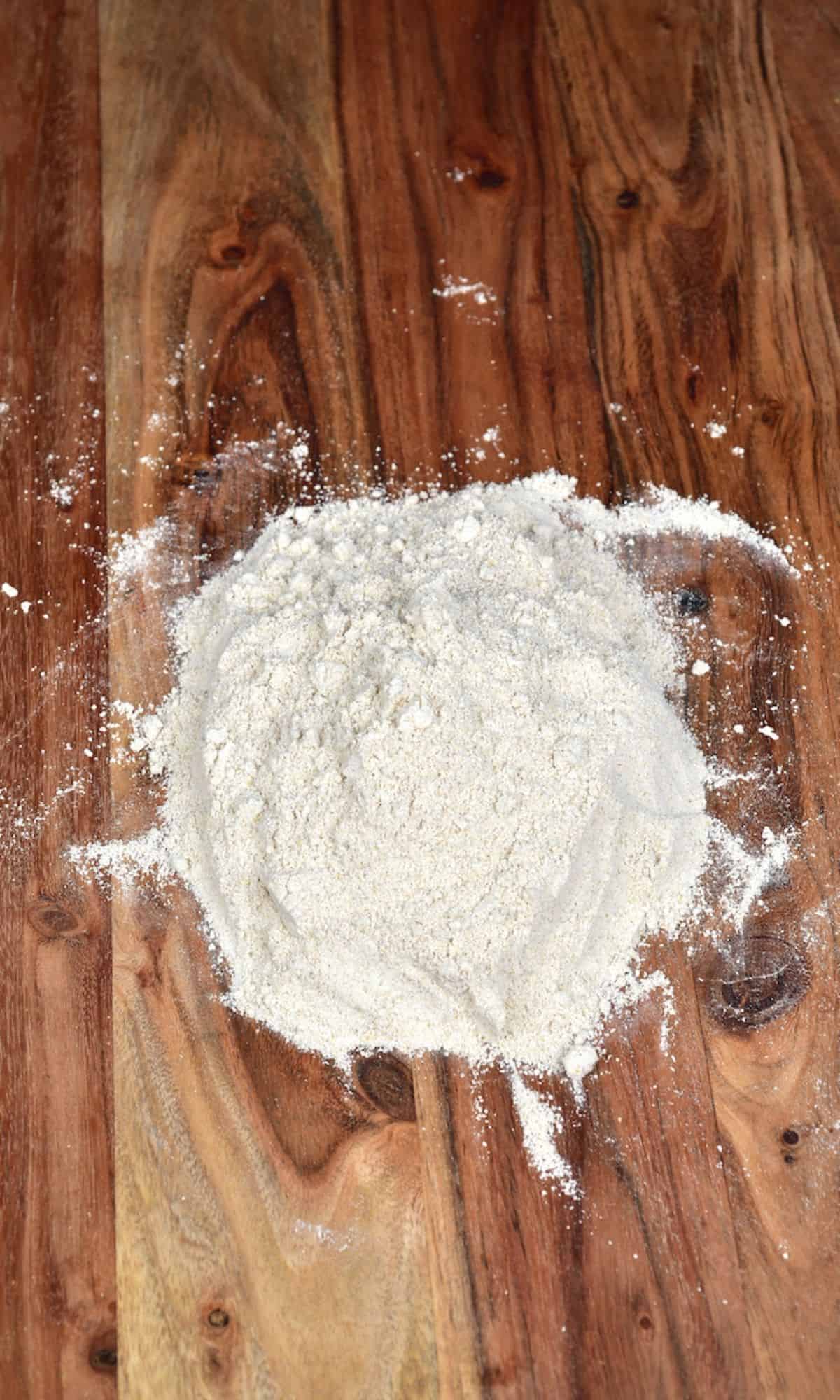
I’ve already shared several homemade DIYs for you, including Almond Flour and Chickpea Flour. Now, it’s the turn for Oat flour – a true pantry staple in my household and one I’ll never (ever) buy. All you need to make oatmeal flour is some oats and a high-speed blender/food processor or spice grinder. Yup, that’s it! Within minutes you then have homemade oat flour ready to use immediately or store for later.
Within this post, I’ll take you through how to make it, suggested oat flour recipes, some top tips, and several FAQs – including storage instructions and substitutions. So, let’s jump right in!
Want to save this recipe?
What is oat flour
In some instances, when making ‘flour’ from an ingredient, it isn’t quite as simple as DIY oat flour. Oatmeal flour is simply a product made from the ground/blended rolled oats.
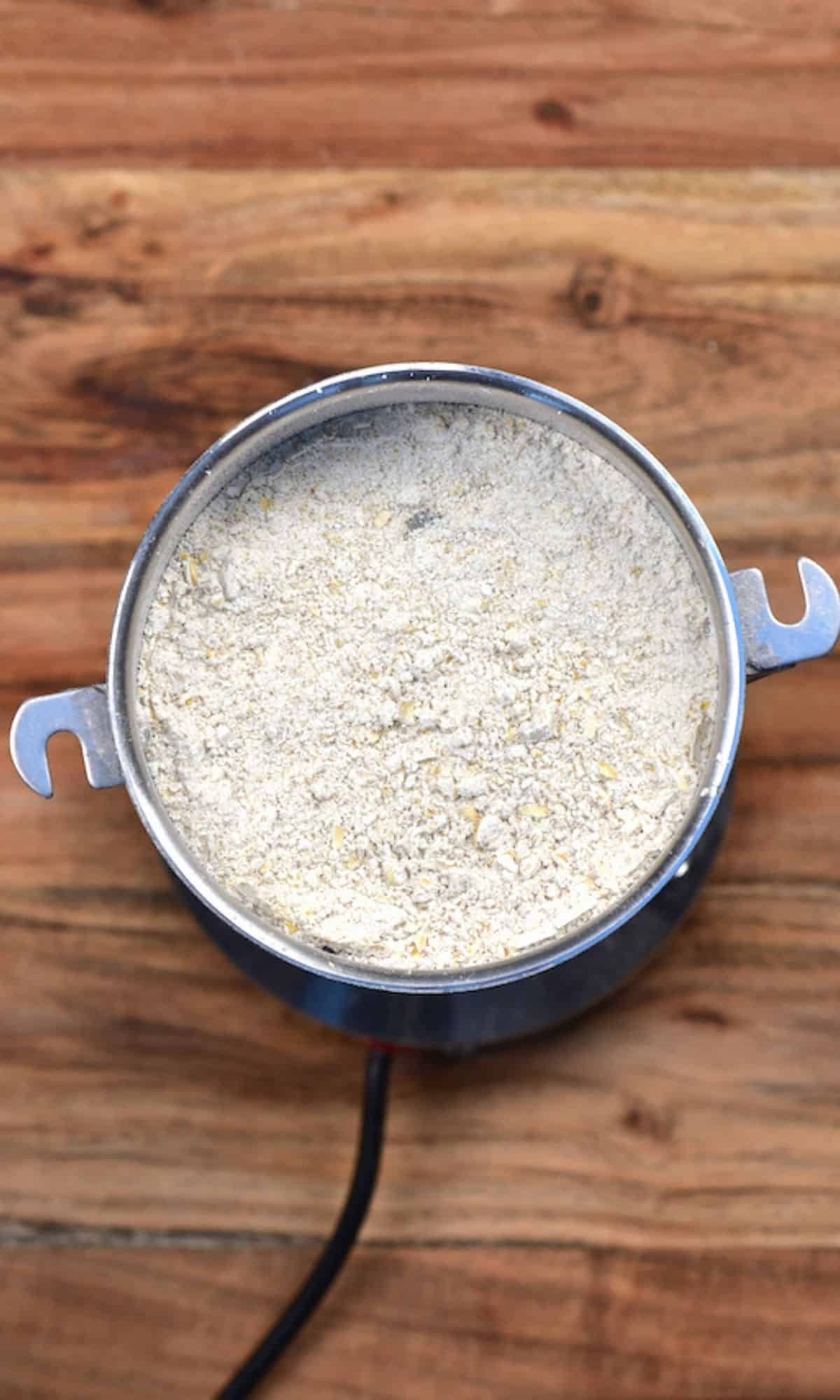
If you’re wondering whether it is ‘healthy,’ then it is as healthy as the oats used to create it. Avoid quick oats, which are often processed! – rolled oats are the way to go!
Oat flour is gluten-free, wholegrain, and a wonderful source of several vitamins, minerals, antioxidants, and fiber! Oats also contain large amounts of a powerful soluble fiber, Beta-Glucan. Beta-Glucan is great for reducing ‘bad’ LDL cholesterol levels and reducing blood sugar levels. It also helps to increase the feeling of fullness for longer. Best of all, it’s beneficial for healthy gut bacteria.
You could also blend steel-cut oats into flour. Though, they take longer to blend and aren’t something I use often. Interestingly, they have a higher yield, though – as one cup of steel-cut oats makes around 2 cups oatmeal flour.
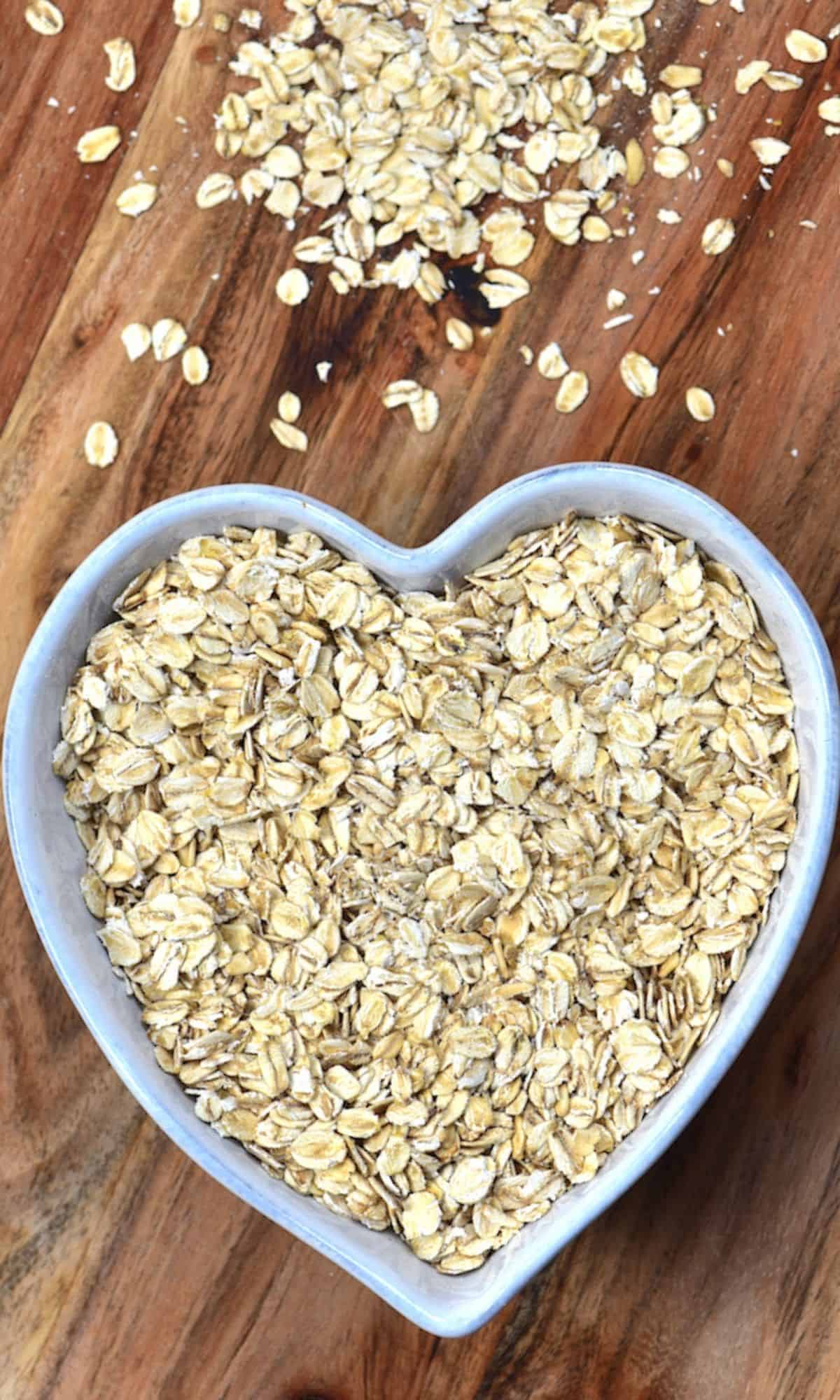
Once ground, your gluten-free oat flour is perfect for adding to baked goods, smoothies, and more – check out a list of my favorite uses at the bottom of the post!
How to make oat flour
Add the rolled oats to a blender, food processor, or spice grinder and blend into a powder.
Depending on the amount you’re grinding, you may need to do it in batches ( \especially if using a spice grinder).
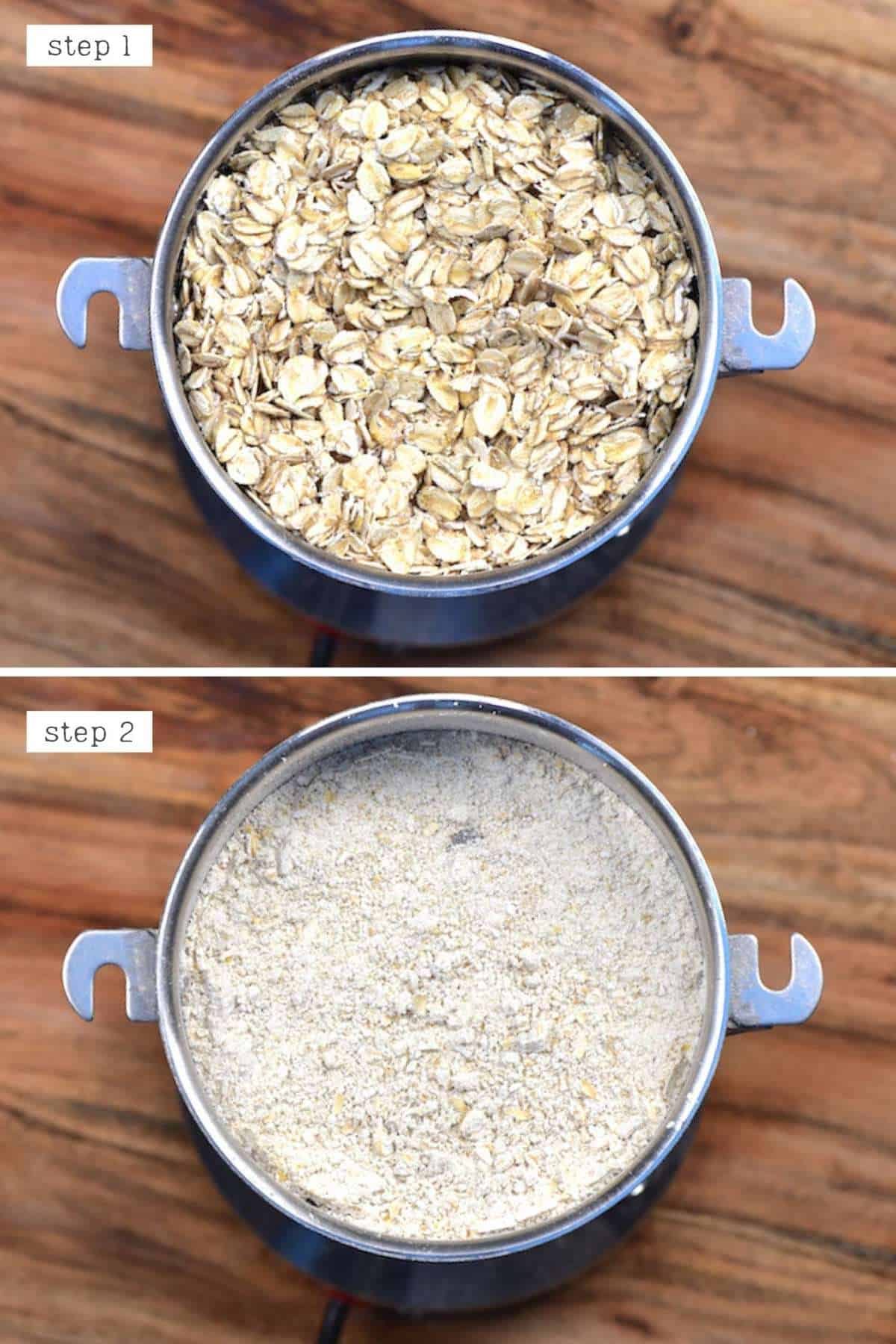
When using a blender/food processor, stop the machine occasionally, give the jug a jiggle to get all the oats back to the bottom, and continue to blitz until you have a fine powder.
For very fine flour, then sieve the mixture and re-grind/blend the larger bits if necessary.
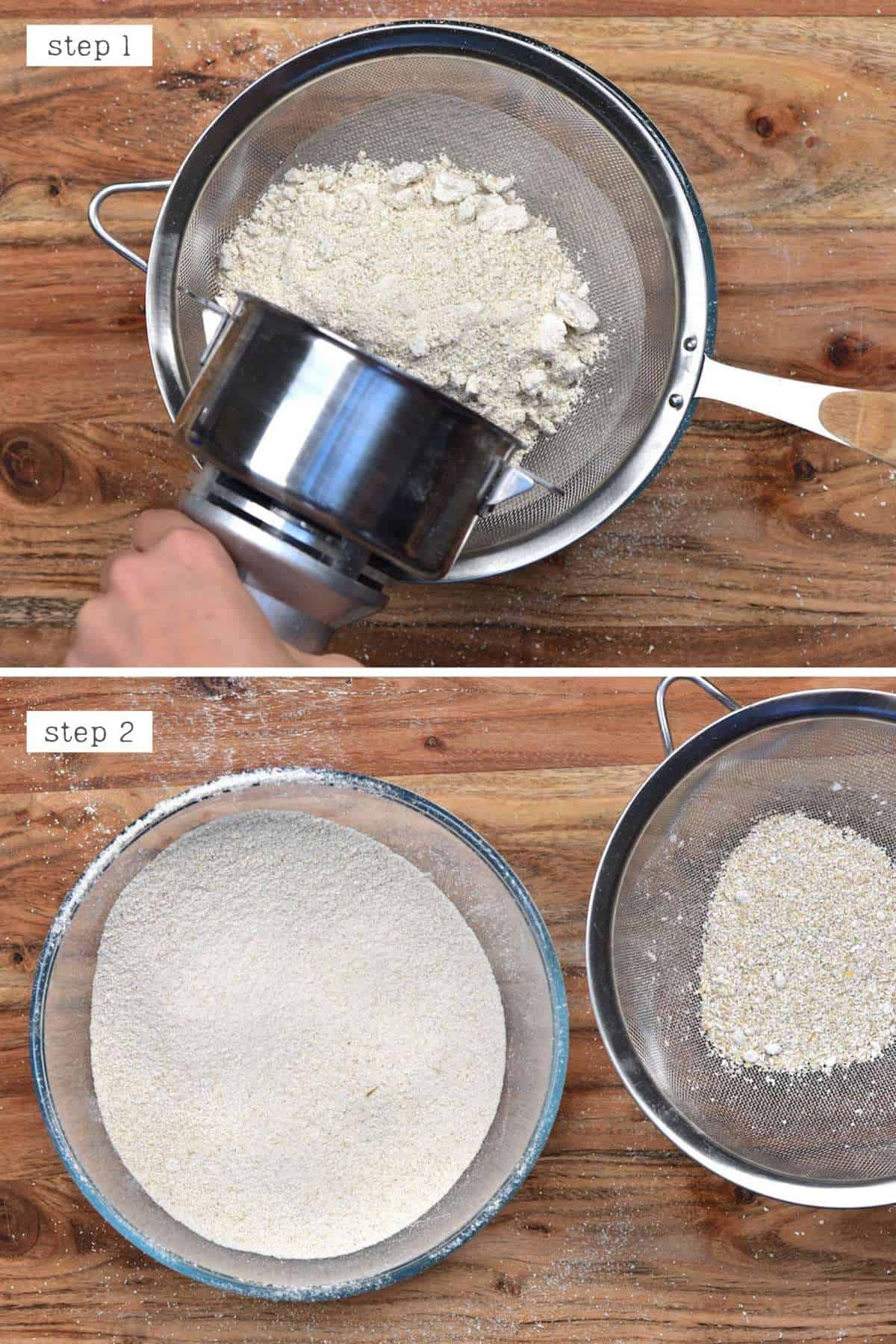
When ready, use immediately or transfer the flour into a large airtight glass jar.
How to store
Homemade oat flour can be stored for several months (3-4) in a cool, dry location.
The shelf life will also depend on how fresh the oats are in general and their BBE date, so note that before blending it into oatmeal flour.
FAQs
I’ve found that it’s basically a 1:1 conversion. One cup of rolled oats makes around one cup of flour (usually just slightly less) – so feel free to double-check to get exact amounts.
Yes, but make sure to use certified gluten-free oats. While oats are naturally gluten-free, not all of the facilities that handle them are – so there is a small chance of cross-contamination.
It doesn’t have to be. Just like the whole oats, the flour is shelf-stable. However, if you want to store the oatmeal flour in the freezer, it can extend its shelf life to up to 12 months.
No, as with most gluten-free flour options, a 1:1 substitution usually won’t work. In fact, in many gluten-free recipes, you’ll note that several different flour types are used to achieve the correct texture, dryness, consistency, etc. It’s best to find recipes that specifically call for the flour (or at least advise you on how much to use as a sub).
Yes, as they are just oats – feel free to use them for raw purposes. This includes adding to smoothies as a thickener, for raw vegan cookie dough, etc. Some people may have digestive issues with eating them raw – in which case, lay the oats out in a thin layer and bake in the oven for a few minutes at 350ºF/180ºC before blending into a powder – but this isn’t usually necessary.
Yes, technically, you can use any of the above. I’d avoid instant oats as they often contain more processing and additives. Steel-cut oats take longer to process but yield more flour (double the amount).
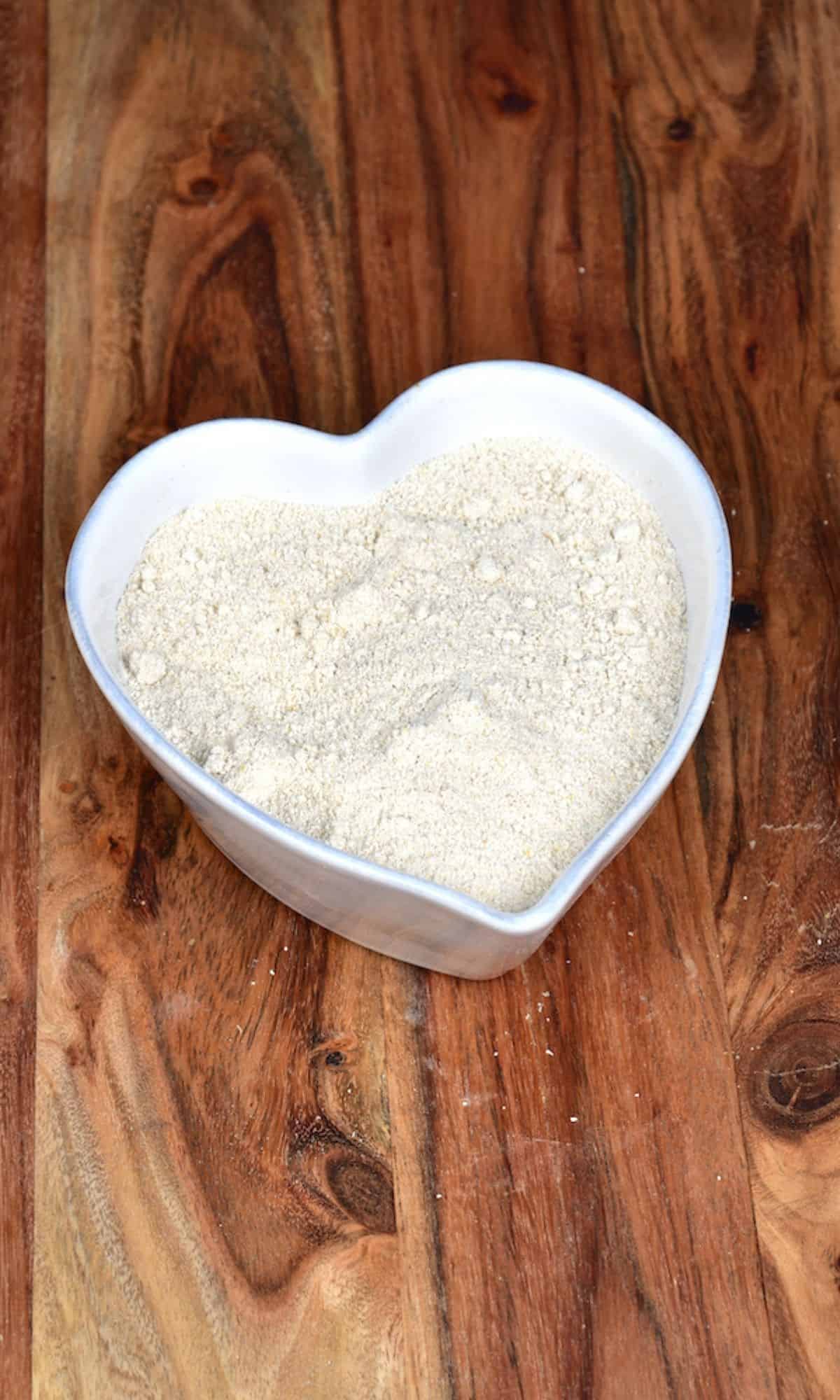
Oat flour recipes & uses
There are tons of ways to use this. Here are just a few of my top suggestions.
- In Cookies: Like these Vegan Choc Chip & Banana Healthy Oatmeal Cookies, Healthy Chocolate Digestive Biscuits, or Oatmeal Chocolate Chip Cookie Cups.
- In Pancakes: like in these protein pancakes.
- Cakes & Brownies: Like this One-Minute Vegan Chocolate Mug Cake.
- In Snacks/Candy Bars: Like these No-Bake Chocolate Peanut Butter Oatmeal Bars or Healthier Homemade snickers Bars (Vegan).
- Within smoothies: Like any within this Guide to Healthy Smoothie Recipes.
- To top crumbles and crisps: Like this Mixed Berry Crumble (With Streusel Topping).
- For Pizza: like this Butternut Squash Pizza with Pesto.
- As a ‘breading’: For various baked and fried goodies. Like these Pumpkin Bean Burgers.
- For pasta: like this 3 Ingredient Oat Gluten-free Pasta.
Let me know in the comments what some of your other favorite uses are!
More homemade flour tutorials
- How to Make Lentil Flour
- How To Make Chickpea Flour
- Homemade Rye Flour (Pumpernickel Flour)
- How To Make Almond Flour
Let me know in the comments if there are other flours and pantry staple DIYs you’d like me to share!
If you make this oat flour recipe, let me know your thoughts and questions in the comments. I’d also really appreciate a recipe rating and would love to see your recreations – just tag @AlphaFoodie.
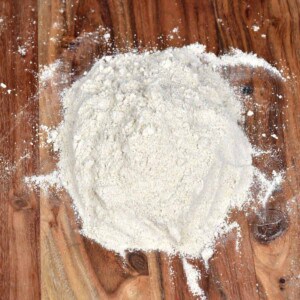
How To Make Oat Flour
Ingredients
- oats
Instructions
- Add the rolled oats to a blender, food processor, or spice grinder and blend into a powder.Depending on the amount you're grinding, you may need to do it in batches (especially if using a spice grinder).When using a blender/food processor, stop the machine occasionally, give the jug a jiggle to get all the oats back to the bottom, and continue to blitz until you have a fine powder.
- For very fine flour, then sieve the mixture and re-grind/blend the larger bits if necessary.
- When ready, use immediately or transfer the flour into a large airtight glass jar.
How To Store
- Homemade oat flour can be stored for several months (3-4) in a cool, dry location.The shelf life will also depend on how fresh the oats are in general and their BBE date, so note that before blending it into oat meal flour.

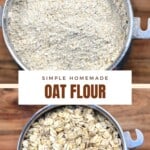









I’ve seen your oat flour recipe and oat milk recipe. If i wanted to use ground oat flour to make oat milk. Is it the same measurements? Or use less oat flour?
Hey Ed! If you’re using oat flour instead of whole rolled oats, you’ll need less since it’s already ground and more compact. I recommend starting with ½ cup oat flour to 4 cups ice-cold water instead of ¾ cup rolled oats and adjusting based on your preferred consistency.
Since oat flour absorbs water more quickly, blending briefly and straining immediately can help prevent it from turning too thick or slimy. Hope that helps!
Thanks; l love the recipes; what actually brought me here is avocado oil preparation.
Thank you so much for your comment.